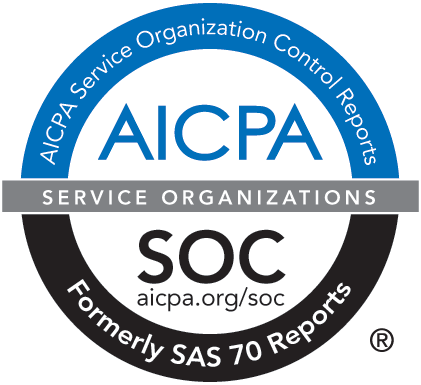The 7 Most Common Myths About DAFs
January 28, 2021 - The donor-advised fund (DAF) continues its meteoric rise in popularity, yet there are still some misconceptions about the tax-efficient giving vehicle. In this article, we’re clearing up the confusion and debunking the seven most common myths surrounding DAFs.
MYTH #1: DAFs are just a fad.
According to National Philanthropic Trust (NPT)’s 2019 DAF Report, the number of donor-advised funds has steadily grown over the last few years, with an increase of 55% in 2018 alone. Contributions to DAFs have increased by 86% over the past 5 years. It is no wonder NPT projected that grantmaking from donor-advised funds will “continue to grow at a consistently high rate.”
Donor-advised funds are a tax-advantageous way to maximize charitable impact. In addition to the tax advantages, today’s donors are increasingly interested in flexibility, accessibility, and transparency when it comes to their charitable giving and are finding donor-advised funds to be a natural fit. Some sponsoring organizations, like HighGround, also offer donors the ability to contribute and recommend grants online, making these vehicles especially convenient. Donor-advised funds have staying power, and for good reason.
MYTH #2: You have to be a millionaire to open a DAF.
Unlike the substantial time and cost required to establish a private foundation, DAFs can usually be opened within a day and with a minimum contribution of anywhere between $0-$25,000. While DAFs are more often opened by donors in their 50s, the lower contribution minimums have encouraged younger donors to adopt this vehicle too. According to NPT’s 2019 DAF Report, the average size of a DAF is $166,653 - far from a million.
MYTH #3: DAFs just hold money that would otherwise be given to charity.
DAF critics worry that the vehicle allows money that could have been given directly to charity to sit indefinitely in glorified storehouses. However, the statistics tell a different story. In 2018, for example, contributions to DAFs and grants from them grew in tandem. According to NPT’s 2019 DAF Report, “the aggregate grant payout rates from DAFs annually exceed 20% every year on record.” Compare that to the 5% average annual payout rate of private foundations.
Additionally, many sponsoring organizations have policies in place to encourage or require grant-making. For example, a sponsoring organization might donate to charity the funds in a DAF that has not made a new grant within a certain timeframe.
MYTH #4: It is better to donate directly to charity than to pay the fees associated with DAFs.
Generally, a DAF’s sponsoring organization will charge an administrative fee on the market value of the DAF to cover expenses for tax receipt preparation, compliance, and the processing of grant recommendations. Investment funds usually bear the cost of investment management and operating expenses. While the total cost varies among sponsoring organizations, these fees are often still less than the processing fees for donating with a credit card.
Additionally, it can be tax-advantageous to give through a DAF for a number of reasons:
- Contributions to a DAF are often invested and professionally managed for the opportunity to grow, tax-free, before being granted to charity.
- Publicly traded securities and other illiquid gifts that have been held for over a year can be contributed to a DAF at fair market value and are not subject to capital gains tax. Avoiding this tax exposure means more money goes to the donor’s charity of choice when granted.
- Some donors use their DAFs to bundle their charitable giving or to prefund years of charitable giving with a financial windfall. Donors who have previously donated assets to their DAF are then able to continue to provide consistent funding to charities in times of recession. For example, according to The NonProfit Times, donor-advised funds continued to report record increases in grants in 2020 in response to the pandemic.
MYTH #5: You can’t involve your family or create a charitable legacy with DAFs.
Family members can be named as additional advisors or as successor advisors for a donor-advised fund, which may exist for multiple generations. Additionally, a donor-advised fund can be named as a beneficiary of other charitable giving vehicles. For example, the remainder of a donor’s charitable remainder trust could be used to set up a donor-advised fund, to be advised by the donors’ heirs.
MYTH #6: You don’t have any control over your DAF.
It is true that the sponsoring organization of a donor-advised fund has ownership of the contributions made to it, but the donor retains the right to make recommendations about the investment of the fund and grants to charities. While donors do not have legal control of the assets once they have been contributed, they are able to make unilateral decisions regarding the grant recommendations. Grant recommendations are commonly approved by the sponsoring organization so long as they are within the granting policy guidelines of the sponsoring organization.
MYTH #7: A nonprofit won’t know who its donors are if the donors give through a DAF.
Some donors consider it a benefit that they can give anonymously with their DAF, but in practice, the vast majority do not give anonymously. Most often, grants that charities receive from DAFs are accompanied by donors’ names and addresses. When this happens, charities are able to connect with and thank donors who give through DAFs just as they are with donors who give directly.
Whether or not a DAF ends up being right for you, it’s important to consider the facts as you seek to maximize your charitable impact. To learn what giving vehicles could best serve your charitable goals, call us at 214.978.3300.
Related articles:
DAFs 101: Basics
DAFs 101: Benefits, Part 1
DAFs 101: Benefits, Part 2



